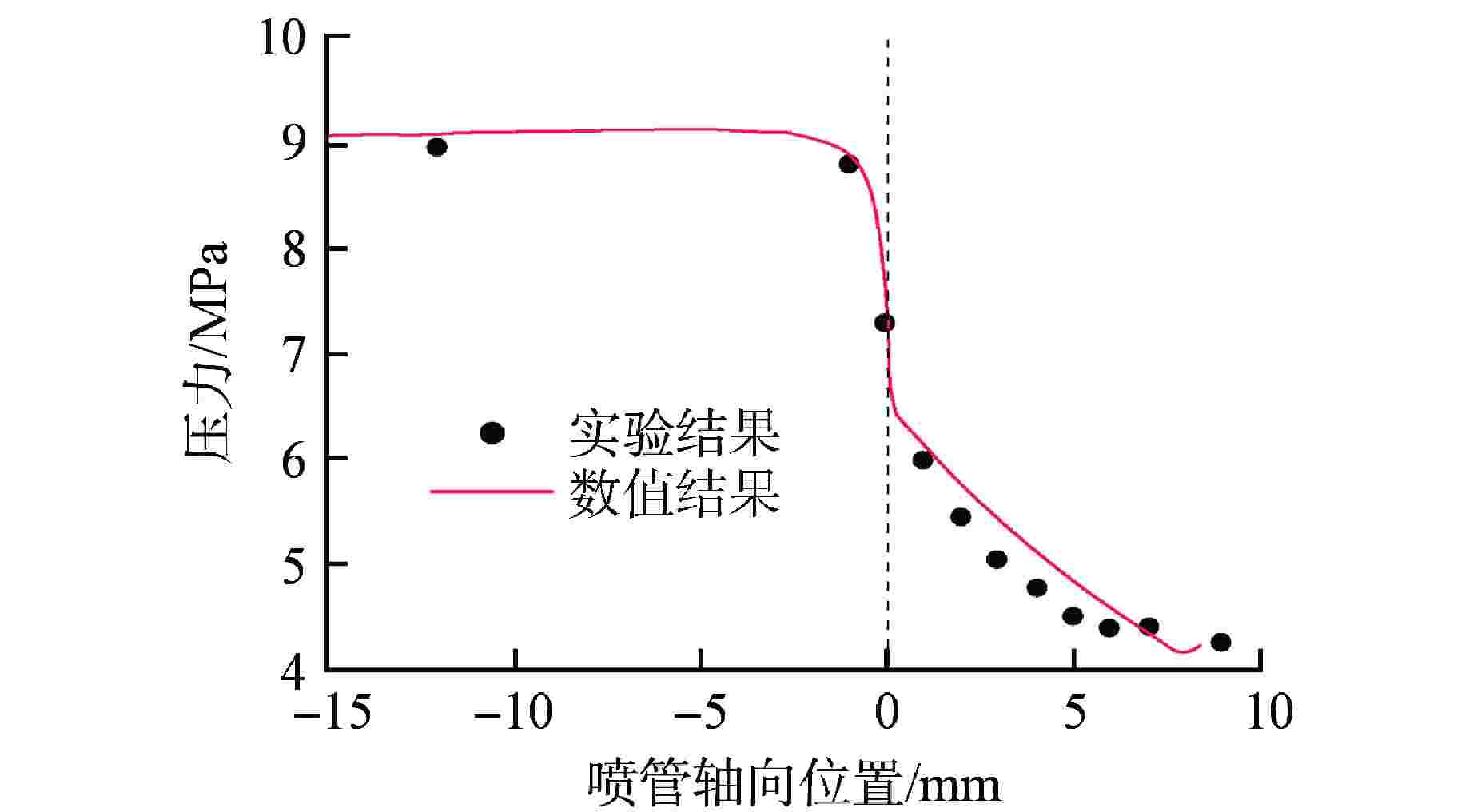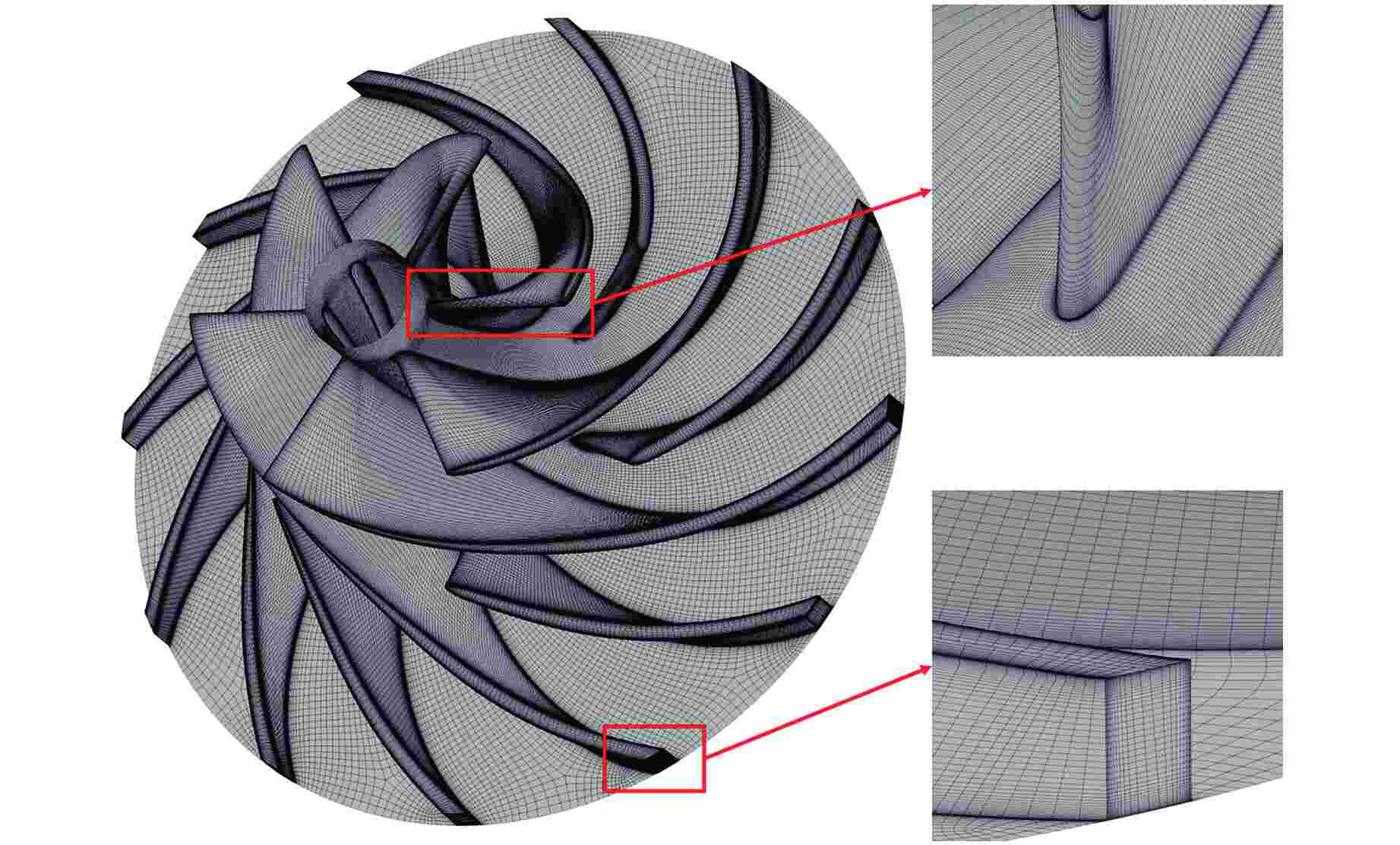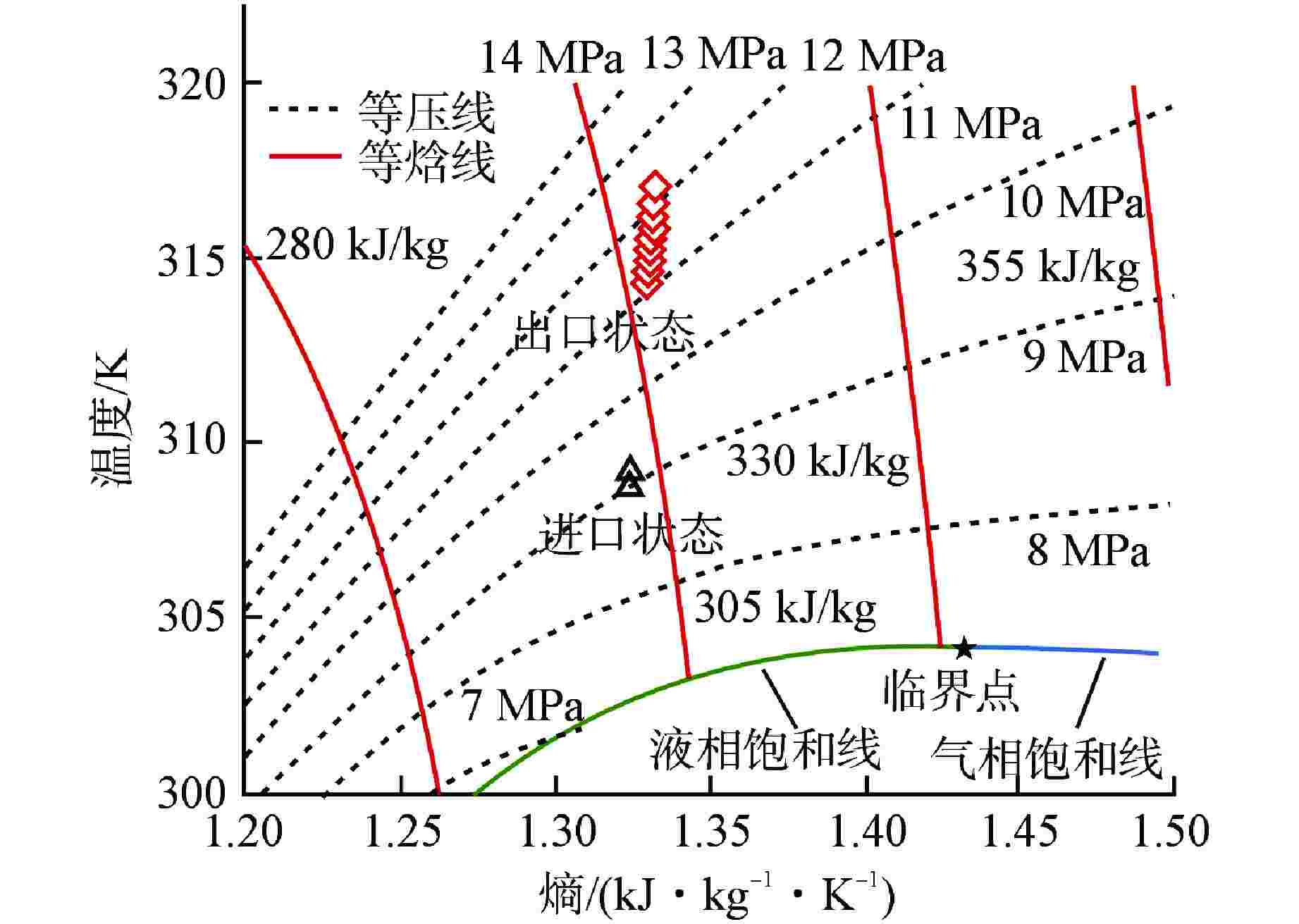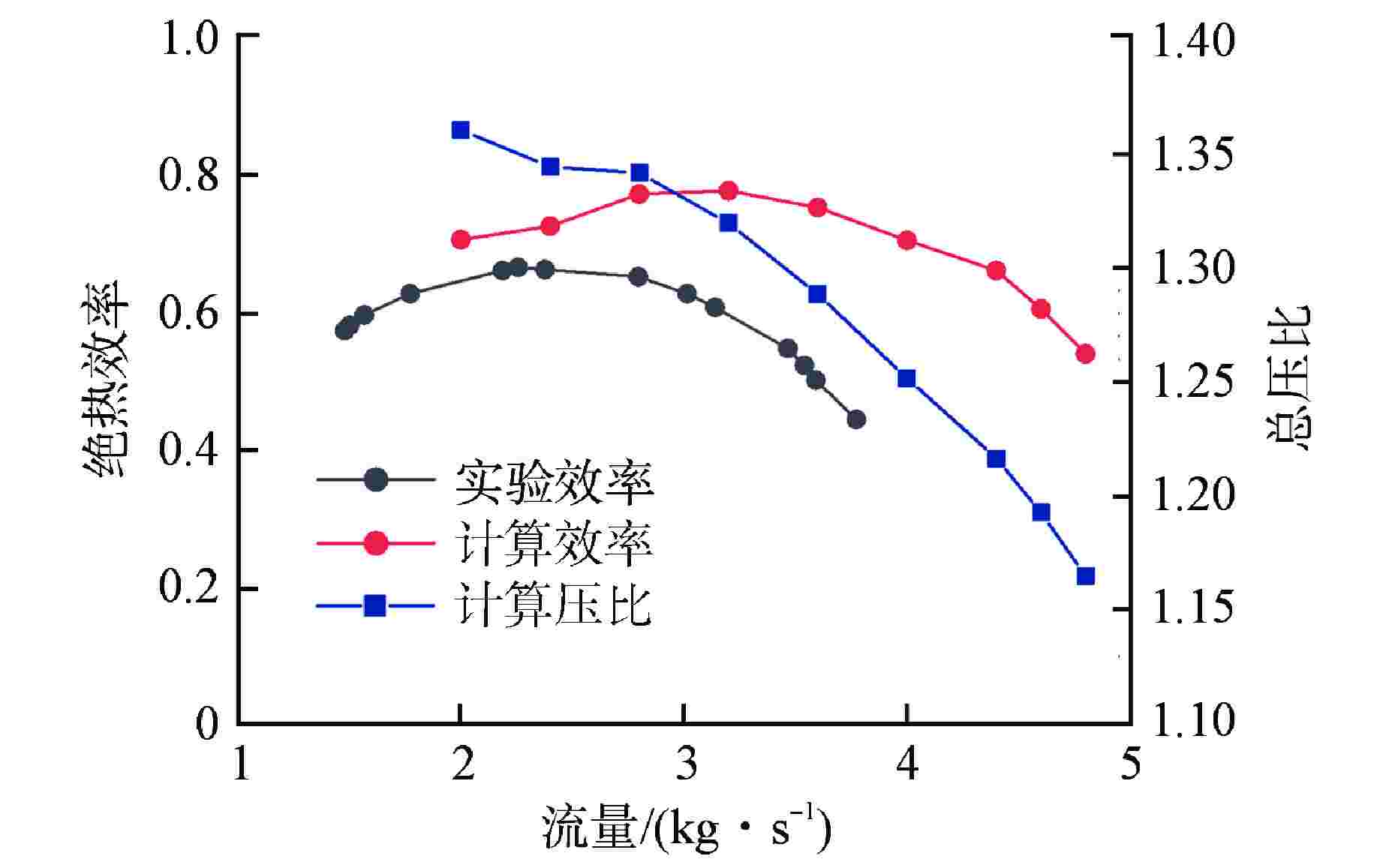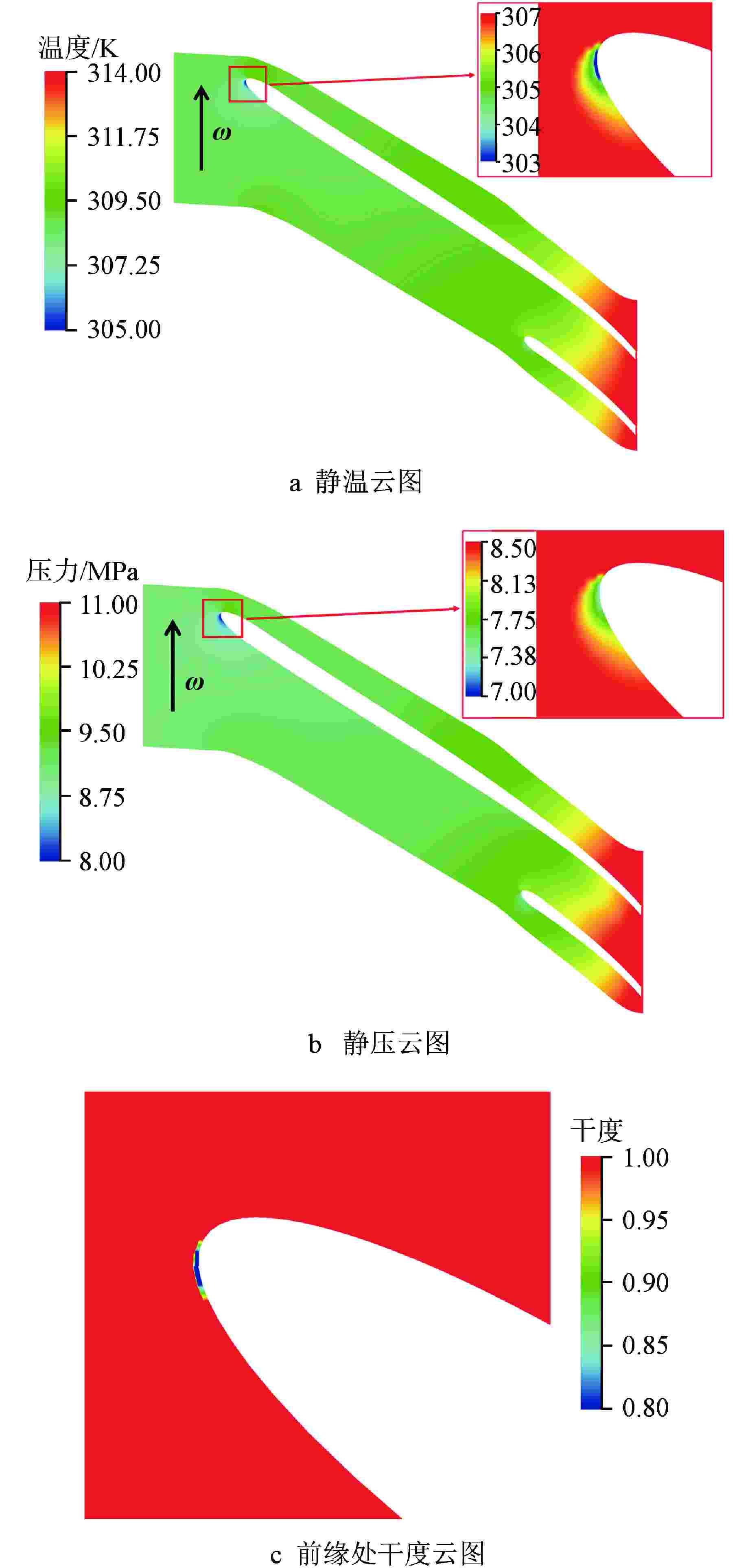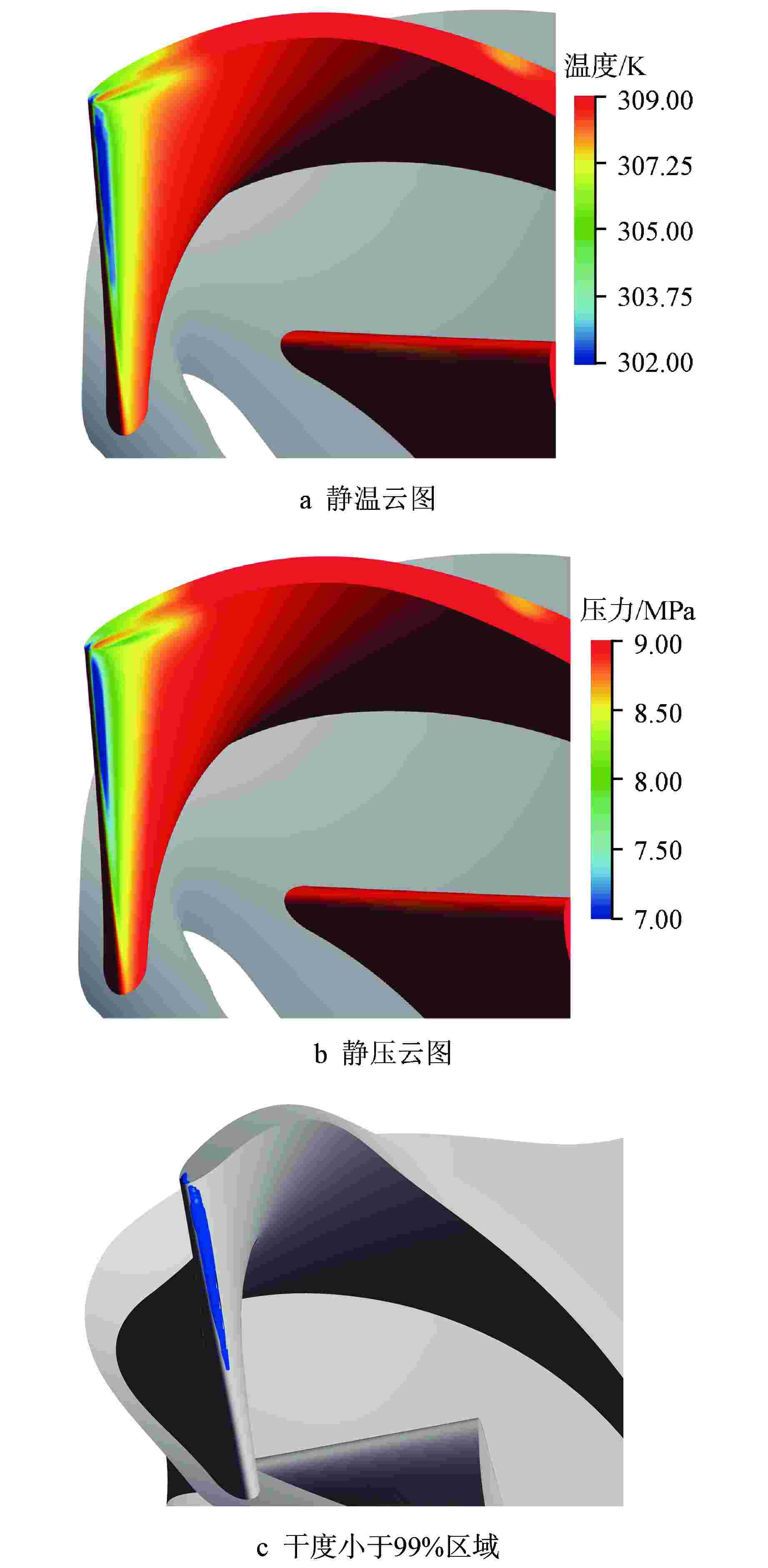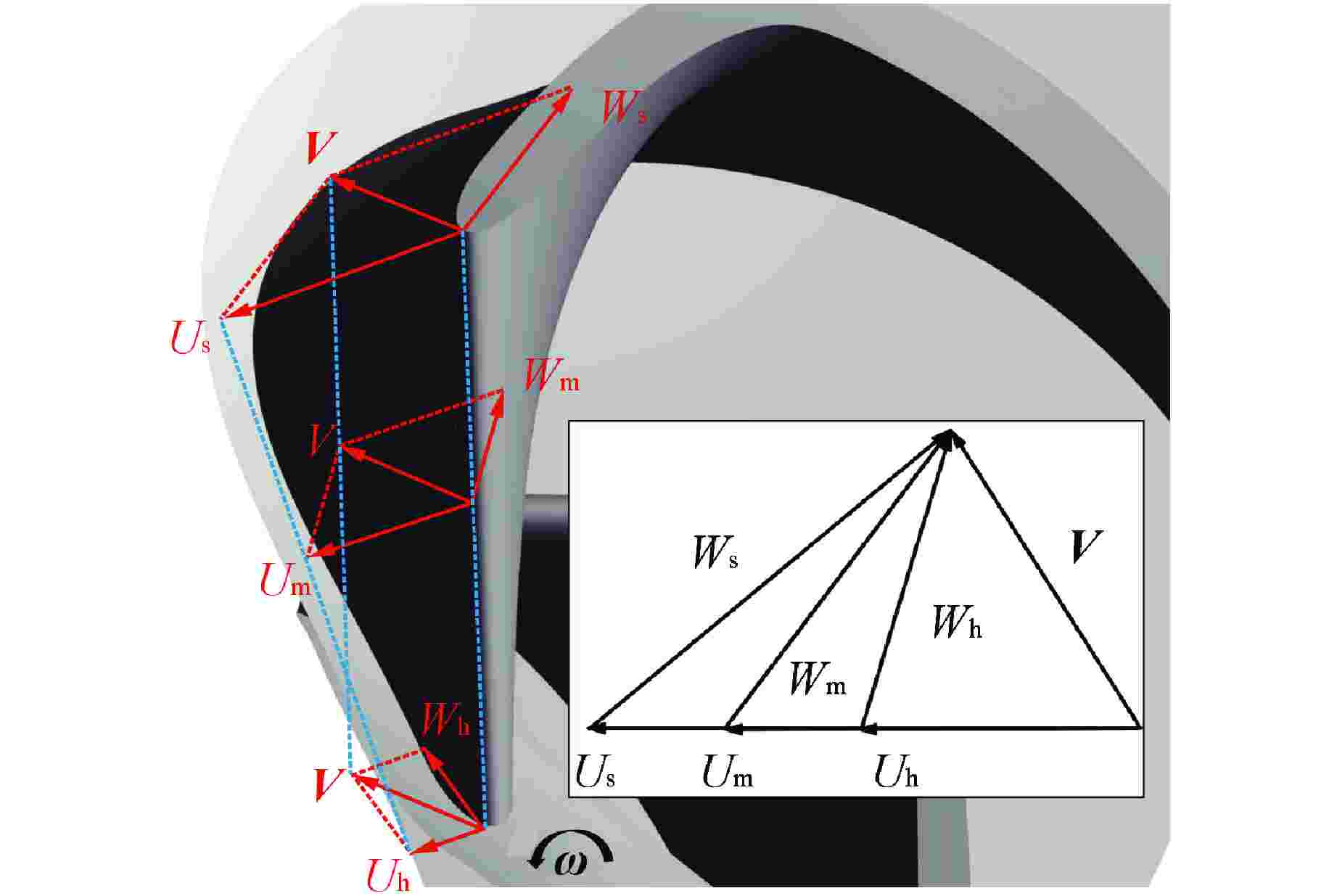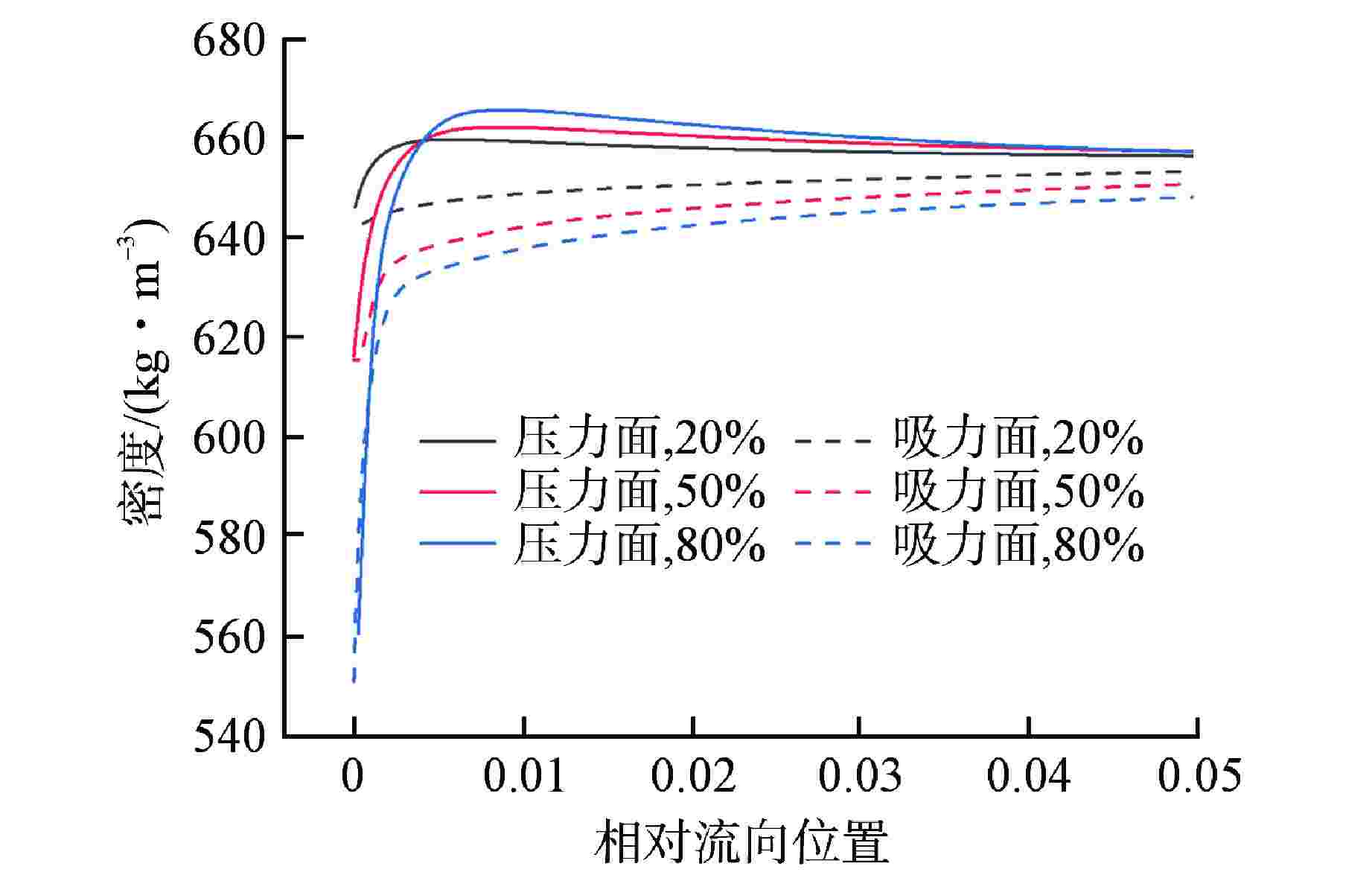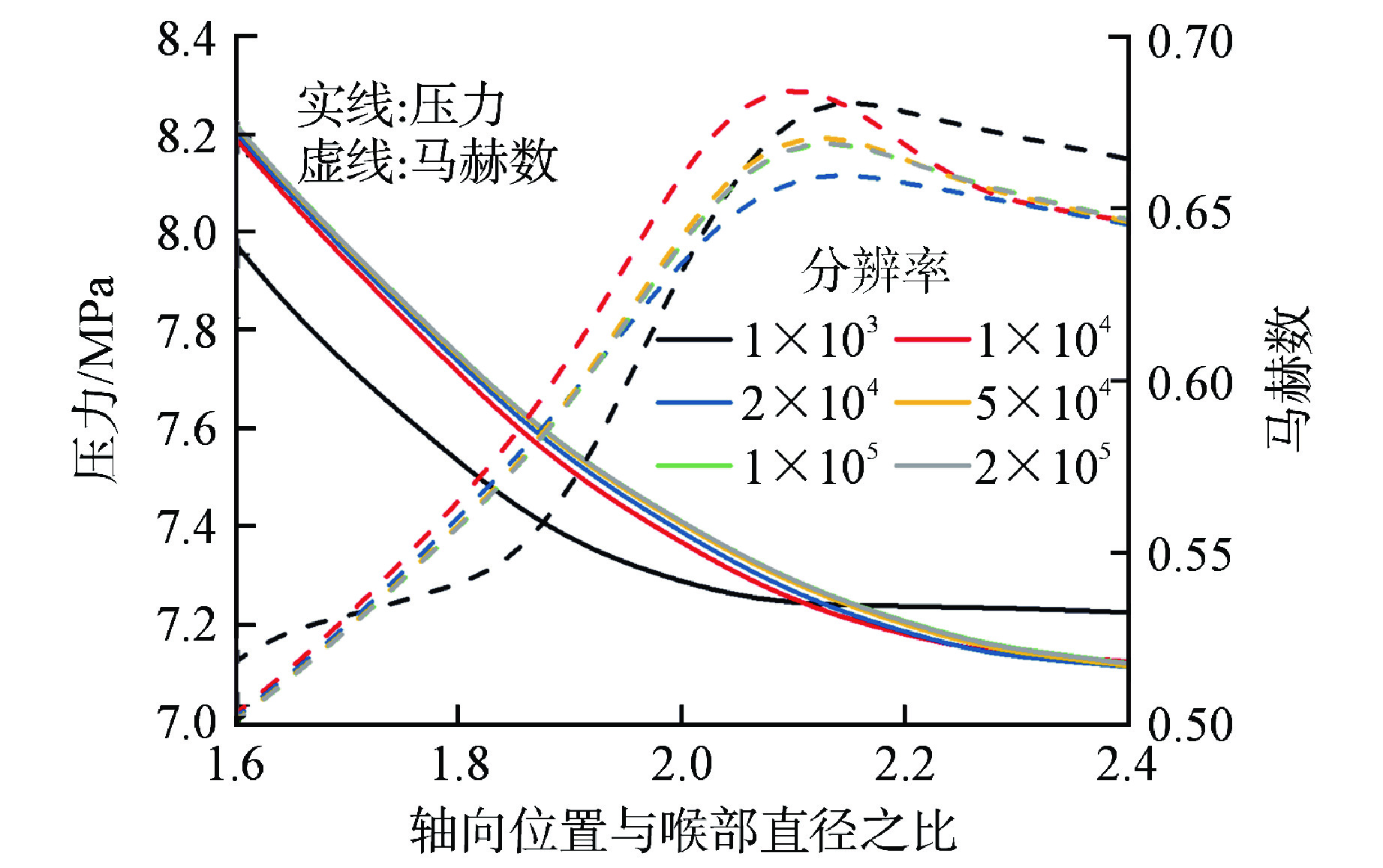Numerical Simulation of Condensation in Supercritical CO2 Compressor Based on Equilibrium Condensation Model
-
摘要: 超临界二氧化碳(sCO2)布雷顿循环是第四代核反应堆能量转换系统主要解决方案之一,实际运行中,压缩机内sCO2可能发生凝结,导致效率降低,运行稳定性受到影响。本文结合Span-Wagner物性模型,建立了sCO2的平衡冷凝数值模型,对sCO2压缩机进行数值模拟,分析了sCO2冷凝的主要区域、成因及影响。结果表明,sCO2的凝结主要受流速影响,发生于压缩机主叶片前缘吸力面的50%叶高以上区域及前缘间隙内近压力面区域,前一区域由sCO2的局部加速所致,后一区域由叶顶间隙泄漏所致;在给定工况下,冷凝区域很小,未扩展到整个通道,冷凝的sCO2很少,未形成两相流,对压缩机运行的影响很小。
-
关键词:
- 超临界二氧化碳(sCO2);
- 离心压缩机;
- 数值计算;
- 冷凝
Abstract: Supercritical carbon dioxide (sCO2) Brayton cycle is one of the main solutions of the Generation IV nuclear reactor energy conversion system. During the actual operation, sCO2 in the compressor may condense. As a result, the efficiency is reduced and the operation stability is affected. In this paper, the equilibrium condensation numerical model of sCO2 was established with the Span-Wagner model, and the numerical simulation of the sCO2 compressor was carried out. The main condensation regions, causes and influences of the condensation of sCO2 were analyzed. The results show that the condensation of SCO2 is mainly affected by the flow velocity. The condensation of sCO2 occurs in the area above 50% blade height on the suction surface of the leading edge of the main blade and near the pressure surface in the leading edge gap. The former area is caused by local acceleration of sCO2, and the latter area is caused by tip clearance leakage; Under the given working condition, the condensation area is very small, which does not extend to the whole channel, the condensed sCO2 is very little, and no two-phase flow is formed, which has little influence on the operation of the compressor. -
表 1 叶轮几何尺寸信息
Table 1. Impeller Geometry
参数名 参数值 参数名 参数值 主叶片数量 6 叶顶间隙/mm 0.254 分流叶片数量 6 前缘叶厚/mm 0.762 轮毂进口半径/mm 2.54 尾缘叶厚/mm 0.762 轮盖进口半径/mm 9.37 前缘叶高/mm 1.7 出口半径/mm 18.68 前缘几何角 37.13° 轴向长度/mm 15.9 尾缘几何角 −50° -
[1] 黄彦平,王俊峰. 超临界二氧化碳在核反应堆系统中的应用[J]. 核动力工程,2012, 33(3): 21-27. doi: 10.3969/j.issn.0258-0926.2012.03.005 [2] ABRAM T, ION S. Generation-IV nuclear power: A review of the state of the science[J]. Energy Policy, 2008, 36(12): 4323-4330. doi: 10.1016/j.enpol.2008.09.059 [3] QIN H, WANG C L, TIAN W X, et al. Energy allocation optimization of the gas-cooled space nuclear reactor[J]. Applied Thermal Engineering, 2021, 196: 117289. doi: 10.1016/j.applthermaleng.2021.117289 [4] HEJZLAR P, POPE M J, WILLIAMS W C, et al. Gas cooled fast reactor for generation IV service[J]. Progress in Nuclear Energy, 2005, 47(1-4): 271-282. doi: 10.1016/j.pnucene.2005.05.077 [5] XU J L, SUN E H, LI M J, et al. Key issues and solution strategies for supercritical carbon dioxide coal fired power plant[J]. Energy, 2018, 157: 227-246. doi: 10.1016/j.energy.2018.05.162 [6] DOSTAL D, DRISCOLL M J, HEZZLAR D. A supercritical CO2 cycle for next generation nuclear reactors[J]. Massachusetts Institute of Technology, 2004, 3(154): 265-282. [7] 吴攀,高春天,单建强. 超临界二氧化碳布雷顿循环在核能领域的应用[J]. 现代应用物理,2019, 10(3): 77-86. [8] MATOS A J M. Preliminary aerodynamic design of a supercritical carbon dioxide centrifugal compressor[D]. Ottawa: Carleton University, 2018. [9] WRIGHT S A, RADEL R F, VERNON M E, et al. Operation and analysis of a supercritical CO2 Brayton cycle[R]. Albuquerque: Sandia National Laboratories, 2010. [10] BALTADJIEV N D. An investigation of real gas effects in supercritical CO2 compressors[D]. Cambridge: Massachusetts Institute of Technology, 2012. [11] PECNIK R, RINALDI E, COLONNA P. Computational fluid dynamics of a radial compressor operating with supercritical CO2[J]. Journal of Engineering for Gas Turbines and Power, 2012, 134(12): 122301. doi: 10.1115/1.4007196 [12] BALTADJIEV N D, LETTIERI C, SPAKOVSZKY Z S. An investigation of real gas effects in supercritical CO2 centrifugal compressors[J]. Journal of Turbomachinery, 2015, 137(9): 091003. doi: 10.1115/1.4029616 [13] BAO W R, YANG C, FU L, et al. Non-uniform two-phase flow of supercritical carbon dioxide centrifugal compressor[C]//ASME Turbo Expo 2020: Turbomachinery Technical Conference and Exposition. Virtual: ASME, 2020. [14] RAMAN S K, KIM H D. Computational analysis of the performance characteristics of a supercritical CO2 centrifugal compressor[J]. Computation, 2018, 6(4): 54. doi: 10.3390/computation6040054 [15] 郑宽宽,赵航,丰镇平. 超临界二氧化碳离心压气机内部流动特性分析[J]. 工程热物理学报,2015, 36(5): 985-988. [16] 张国杰. 基于修正模型的非平衡凝结流动数值研究[D]. 徐州: 中国矿业大学, 2018. [17] AKHTAR F B, WEBB R A, EBRAHIMI M. An investigation of nucleating flows of steam in a cascade of turbine blading-theoretical treatment[J]. Transactions of the ASME Journal of Turbomachinery, 1993, 117(1): 121-127. [18] SPAN R, WAGNER W. A new equation of state for carbon dioxide covering the fluid region from the triple-point temperature to 1100 K at pressures up to 800 MPa[J]. Journal of Physical and Chemical Reference Data, 1996, 25(6): 1509-1596. doi: 10.1063/1.555991 [19] RINALDI E, PECNIK R, COLONNA P. Accurate and efficient look-up table approach for dense gas flow simulations[C]//Sixth European Congress on Computational Methods in Applied Sciences and Engineering (ECCOMAS 2012), Vienna, Austria, Sept. 2012: 10-14. [20] BERANA M S, NAKAGAWA M, HARADA A. Shock waves in supersonic two-phase flow of CO2 in converging-diverging nozzles[J]. HVAC & R Research, 2009, 15(6): 1081-1098. [21] WRIGHT S A, PICKARD P S, FULLER R, et al. Supercritical CO2 Brayton cycle power generation development program and initial test results[C]//ASME power conference. 2009, 43505: 573-583. [22] WRIGHT S A. Modeling and experimental results for condensing supercritical CO2 power cycles[R]. Albuquerque, NM: Sandia National Laboratories, 2011. -





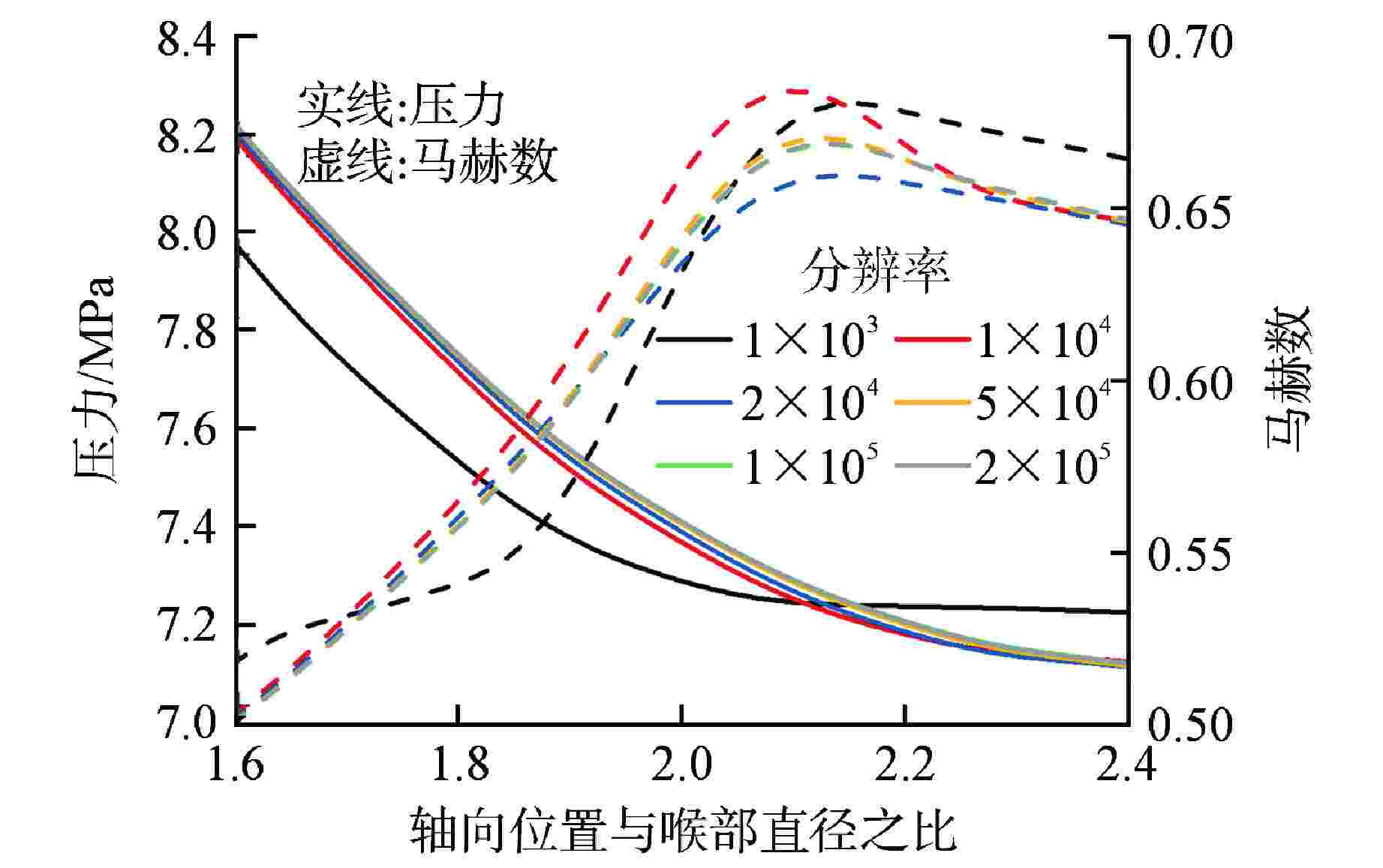
 下载:
下载:

